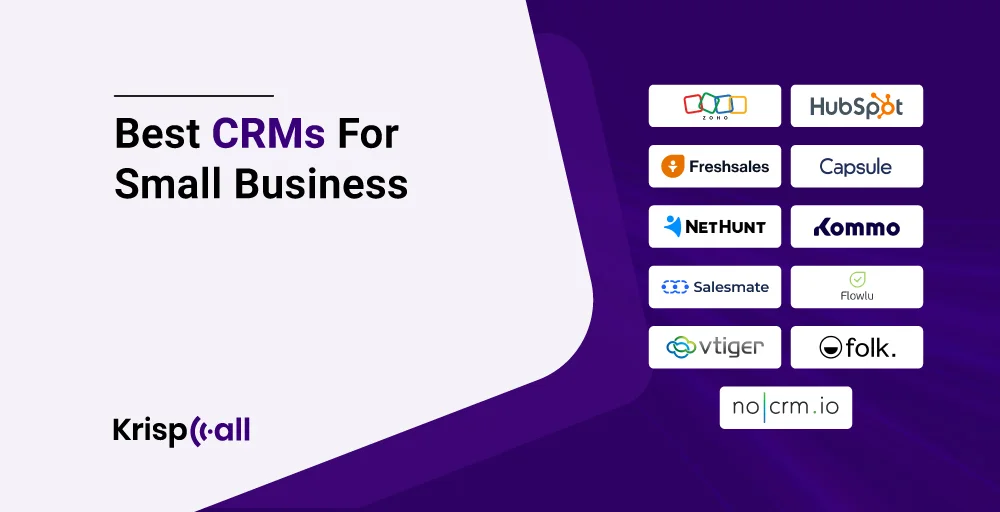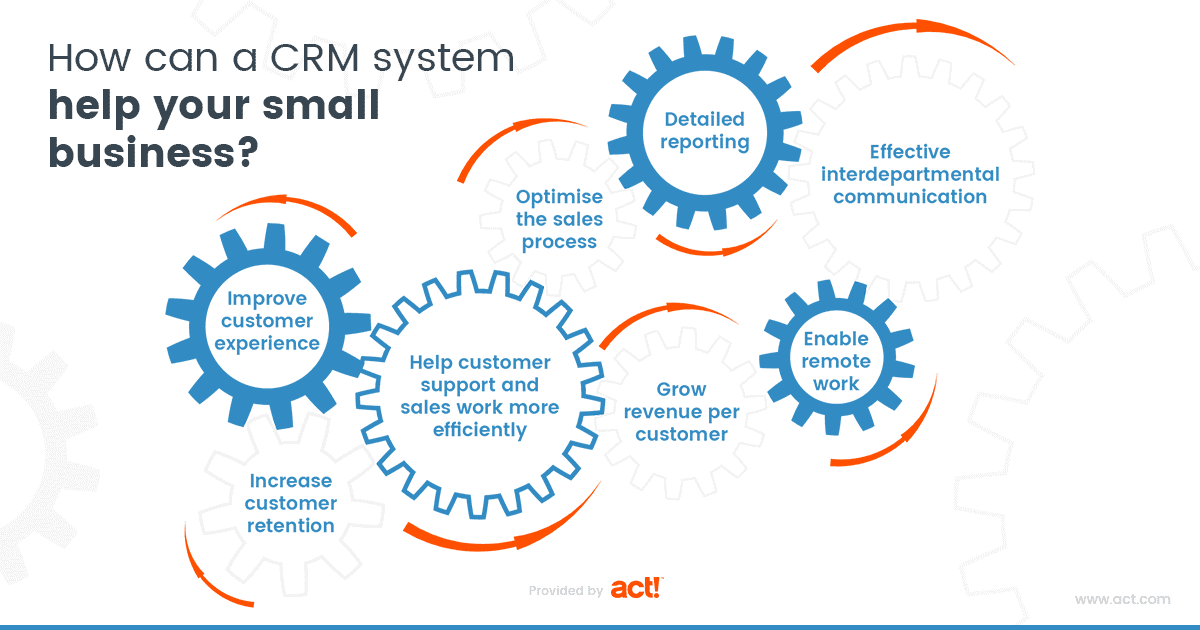
Introduction: Why Your Small Business Needs a CRM
Running a small business is a whirlwind. You’re juggling everything from sales and marketing to customer service and operations. It’s a constant balancing act, and in the midst of it all, it’s easy for things to slip through the cracks. This is where a Customer Relationship Management (CRM) system steps in, acting as your central nervous system for all things customer-related.
But why is a CRM so crucial, especially for small businesses? Think of it this way: your customers are the lifeblood of your company. Without them, you don’t have a business. A CRM helps you understand your customers better, nurture your relationships, and ultimately, drive more sales. It’s about transforming how you interact with your audience, moving from reactive to proactive engagement.
This comprehensive guide will walk you through the entire process of CRM implementation for your small business. We’ll cover everything from choosing the right CRM to integrating it with your existing systems and training your team. Get ready to streamline your operations, boost customer satisfaction, and watch your business thrive.
Understanding the Benefits of a CRM System
Before diving into the implementation process, let’s explore the remarkable advantages a CRM system offers. Knowing these benefits will not only motivate you but also help you make the most of your CRM investment.
Enhanced Customer Relationships
At its core, a CRM is all about building stronger customer relationships. It provides a 360-degree view of each customer, storing all interactions, preferences, and purchase history in one place. This allows your team to:
- Personalize interactions: Tailor your communication to each customer’s specific needs and interests.
- Provide better support: Access a complete history of customer interactions to resolve issues quickly and effectively.
- Anticipate customer needs: Identify patterns and predict future needs, allowing you to offer proactive solutions.
When customers feel understood and valued, they’re more likely to become loyal, repeat buyers.
Improved Sales Performance
A CRM is a sales powerhouse. It automates many of the tedious tasks that sales reps face, freeing them up to focus on what they do best: selling. Key benefits include:
- Lead management: Track leads from initial contact to conversion, ensuring no opportunity is missed.
- Sales pipeline visibility: Gain a clear view of your sales pipeline, allowing you to identify bottlenecks and optimize your sales process.
- Automated tasks: Automate follow-ups, reminders, and other routine tasks, saving time and increasing efficiency.
With a CRM, your sales team can close deals faster and more effectively.
Increased Marketing Effectiveness
A CRM isn’t just for sales; it’s a valuable tool for marketing as well. It helps you understand your audience and tailor your marketing efforts for maximum impact. Here’s how:
- Segmentation: Segment your customer base based on demographics, behavior, and purchase history.
- Targeted campaigns: Create highly targeted marketing campaigns that resonate with specific customer segments.
- Campaign tracking: Track the performance of your marketing campaigns and measure your ROI.
By using a CRM, you can ensure that your marketing spend is delivering the best possible results.
Streamlined Operations
A CRM can streamline your business operations by integrating with other systems, such as email marketing platforms and accounting software. This integration eliminates data silos and reduces manual data entry, saving time and reducing errors. This leads to:
- Improved data accuracy: Centralized data eliminates the risk of inconsistencies.
- Increased efficiency: Automate tasks and workflows to save time and resources.
- Better decision-making: Access real-time data and insights to make informed decisions.
By streamlining your operations, a CRM helps you work smarter, not harder.
Choosing the Right CRM for Your Small Business
Selecting the right CRM is a crucial first step. With so many options available, it can feel overwhelming. Here’s a guide to help you navigate the selection process.
Assess Your Needs and Goals
Before you start looking at CRM systems, take the time to understand your specific needs and goals. Ask yourself:
- What are your primary business objectives?
- What are your biggest pain points in managing customer relationships?
- What are your key performance indicators (KPIs)?
- What features are essential for your business?
Defining your needs will help you narrow down your options and choose a CRM that aligns with your business strategy.
Consider Your Budget
CRM systems come in a variety of price points, from free to enterprise-level solutions. Determine your budget and stick to it. Consider the following costs:
- Subscription fees: Most CRM systems operate on a monthly or annual subscription basis.
- Implementation costs: This may include the cost of data migration, customization, and training.
- Ongoing costs: Consider the cost of support, maintenance, and upgrades.
Remember to factor in the long-term cost of ownership.
Evaluate Features and Functionality
Different CRM systems offer different features. Make sure the CRM you choose has the features you need, such as:
- Contact management: Organize and manage customer contact information.
- Sales automation: Automate sales tasks, such as lead tracking and follow-ups.
- Marketing automation: Automate marketing campaigns and track their performance.
- Reporting and analytics: Generate reports and analyze data to gain insights.
- Integration: Integrate with other systems, such as email marketing platforms and accounting software.
Prioritize the features that are most important to your business.
Research CRM Vendors
Once you have a clear understanding of your needs, budget, and desired features, it’s time to research different CRM vendors. Consider the following:
- Read reviews: Read reviews from other small businesses to get an unbiased perspective.
- Request demos: Request demos from vendors to see their CRM in action.
- Compare pricing: Compare pricing plans and features to find the best value.
- Check for scalability: Choose a CRM that can grow with your business.
- Consider ease of use: Opt for a CRM that is user-friendly and easy to learn.
Take your time and do your research to find the best fit.
Popular CRM Options for Small Businesses
Here are some popular CRM systems often recommended for small businesses:
- Zoho CRM: A robust and affordable option with a wide range of features.
- HubSpot CRM: A free CRM that’s easy to use and perfect for beginners.
- Salesforce Sales Cloud: A comprehensive CRM with advanced features for larger businesses.
- Pipedrive: A sales-focused CRM that’s designed to streamline the sales process.
- Freshsales: A user-friendly CRM with a focus on sales and customer support.
Explore these options and see which one best aligns with your specific needs.
Implementing Your CRM: A Step-by-Step Guide
Once you’ve chosen your CRM, it’s time to implement it. This process can seem daunting, but with a structured approach, it’s manageable.
1. Planning and Preparation
Before you start implementing your CRM, create a detailed plan. This plan should include:
- Define your goals: Clearly define what you want to achieve with your CRM.
- Identify key stakeholders: Determine who will be involved in the implementation process.
- Create a timeline: Set realistic deadlines for each stage of the implementation.
- Assign roles and responsibilities: Clearly define who is responsible for each task.
Proper planning will set you up for a successful implementation.
2. Data Migration
Migrating your data from your existing systems to your new CRM is a critical step. Here’s how to do it effectively:
- Clean your data: Remove any duplicate or outdated records.
- Map your data fields: Match your existing data fields to the corresponding fields in your CRM.
- Choose a data migration method: You can choose to manually enter data, use a data import tool, or hire a data migration specialist.
- Test your data: Verify that your data has been migrated correctly.
Ensure your data is accurate and organized to make the most of your CRM.
3. Customization and Configuration
Customize your CRM to meet your specific needs. This may involve:
- Setting up user roles and permissions: Control who has access to different features and data.
- Creating custom fields: Add fields to store data that’s specific to your business.
- Configuring workflows: Automate tasks and processes, such as lead assignment and follow-ups.
- Integrating with other systems: Connect your CRM to other tools you use, such as email marketing platforms and accounting software.
Customization allows you to tailor your CRM to your unique business requirements.
4. Training Your Team
Training your team is essential for CRM adoption. Provide comprehensive training on how to use the CRM effectively. This should include:
- Training sessions: Conduct training sessions to explain the features and functionality of the CRM.
- User guides and documentation: Provide user guides and documentation to support your team.
- Hands-on practice: Allow your team to practice using the CRM in a realistic environment.
- Ongoing support: Provide ongoing support and answer questions as they arise.
Invest in training to ensure your team is comfortable and proficient using the CRM.
5. Testing and Launch
Before you launch your CRM, test it thoroughly. This includes:
- Testing data entry: Verify that data can be entered and saved correctly.
- Testing workflows: Ensure that your workflows are functioning as expected.
- Testing integrations: Confirm that your CRM is properly integrated with other systems.
- Pilot program: Consider running a pilot program with a small group of users before launching to the entire team.
Testing ensures a smooth and successful launch.
6. Ongoing Optimization
CRM implementation is an ongoing process. Regularly review your CRM usage and make adjustments as needed. This may involve:
- Monitoring key performance indicators (KPIs): Track your progress and identify areas for improvement.
- Gathering feedback from users: Solicit feedback from your team to identify areas for optimization.
- Updating your CRM: Stay up-to-date with new features and updates.
- Providing ongoing training: Offer ongoing training to ensure your team is using the CRM effectively.
Continuous optimization will help you get the most value from your CRM.
Best Practices for CRM Implementation
To maximize the success of your CRM implementation, follow these best practices:
Start Small and Scale Gradually
Don’t try to implement everything at once. Start with a few core features and gradually add more features as your team becomes more comfortable. This approach allows you to learn from your mistakes and avoid overwhelming your team.
Get Buy-In from Your Team
Involve your team in the implementation process from the beginning. Explain the benefits of the CRM and how it will help them. Address their concerns and provide training to ensure they embrace the new system. A team that is invested in the process is far more likely to use the CRM effectively.
Keep It Simple
Don’t overcomplicate your CRM. Focus on the features that are most important to your business and keep your workflows streamlined. A simple and user-friendly CRM is more likely to be adopted by your team.
Integrate with Other Systems
Integrate your CRM with other systems, such as email marketing platforms and accounting software. This will eliminate data silos and streamline your operations. Integration can improve your overall workflow and make your data more accessible.
Regularly Back Up Your Data
Back up your CRM data regularly to protect against data loss. This is a critical step to ensure the security and integrity of your data. Most CRM systems offer automated backup options.
Measure and Analyze Your Results
Track your progress and measure the impact of your CRM implementation. Use reports and analytics to identify areas for improvement and optimize your CRM usage. This data will help you refine your processes and improve your results over time.
Seek Professional Help
If you’re struggling with CRM implementation, don’t hesitate to seek professional help. CRM consultants can provide expert guidance and support throughout the process. They can help you choose the right CRM, implement it effectively, and train your team. A consultant can be a valuable asset, especially if you have limited experience with CRM systems.
Common Challenges and How to Overcome Them
Implementing a CRM can present some challenges. Here’s how to overcome them:
Lack of User Adoption
One of the biggest challenges is getting your team to adopt the CRM. To overcome this:
- Provide adequate training: Ensure your team understands how to use the CRM.
- Highlight the benefits: Explain how the CRM will make their jobs easier.
- Get their feedback: Involve them in the implementation process.
- Lead by example: Demonstrate your own enthusiasm for the CRM.
User adoption is key to the success of your CRM implementation.
Data Migration Issues
Data migration can be complex. To avoid problems:
- Clean your data: Remove duplicate or outdated records.
- Map your data fields carefully: Ensure data is transferred correctly.
- Test the data after migration: Verify that the data is accurate.
- Consider using a data migration specialist: If you’re not comfortable with the process.
Proper data migration is essential for a functional CRM.
Integration Problems
Integrating your CRM with other systems can sometimes be challenging. To address this:
- Choose a CRM that integrates well with your existing systems: Do your research.
- Follow the vendor’s instructions: Carefully follow the integration instructions.
- Test the integration thoroughly: Verify the integration is functioning correctly.
- Seek help from the vendor’s support team: If you encounter problems.
Seamless integration is crucial for efficient operations.
Lack of Clear Objectives
Without clear objectives, it’s difficult to measure success. To avoid this:
- Define your goals before implementation: Know what you want to achieve.
- Track key performance indicators (KPIs): Measure your progress.
- Regularly review your results: Make adjustments as needed.
Setting clear objectives will help you stay on track.
Conclusion: Reap the Rewards of a Well-Implemented CRM
Implementing a CRM system is a significant undertaking, but the rewards are well worth the effort. By following the steps outlined in this guide, you can successfully implement a CRM and unlock the potential to:
- Improve customer relationships: Build stronger relationships with your customers.
- Boost sales performance: Increase your sales and revenue.
- Enhance marketing effectiveness: Improve your marketing ROI.
- Streamline operations: Operate more efficiently and productively.
A well-implemented CRM is a powerful tool that can transform your small business. Embrace the process, stay focused on your goals, and watch your business flourish. The journey to better customer relationships and business growth starts with a CRM. Make the commitment, and reap the rewards.


